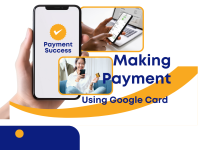A professional email address is essential for personal branding, business communications, and maintaining credibility. Whether you’re a freelancer, entrepreneur, or part of an organization, using a professional email address can enhance your reputation and foster trust. This guide walks you through the process of creating a professional email address that aligns with your career or business goals.
1. Choose a Reliable Email Provider
The first step in creating a professional email address is selecting a trusted email provider. Some of the most popular and reliable options include:
- Gmail: Known for its ease of use and integration with other Google services. Many professionals prefer Gmail because of its reliability, security, and features.
- Outlook: A great choice for those who use Microsoft services. It provides a clean interface and seamless integration with other Microsoft Office tools.
- Zoho Mail: Ideal for small businesses and freelancers who want a professional email without spending money. Zoho offers both free and paid plans.
- ProtonMail: Known for privacy and security, ProtonMail offers encrypted email services, making it a strong choice for professionals handling sensitive information.
Choosing the right email provider ensures that you have reliable access to your inbox, sufficient storage, and enhanced security.
2. Decide on a Custom Domain or Use a Standard One
A custom domain is highly recommended if you’re setting up a professional email address for business purposes. It helps you stand out and adds credibility to your communications. For example, instead of using a generic provider like “[email protected],” you can use “[email protected].”
If you don’t own a domain yet, you can easily register one through services like GoDaddy, Namecheap, or Google Domains. Many email providers, such as G Suite (Google Workspace) and Microsoft 365, allow you to connect your custom domain to your email account, making it easy to send and receive messages with your personalized address.
For freelancers and small businesses, having an email address associated with a custom domain is a great way to look more professional. You can also use it to create email addresses for different departments, such as [email protected] or [email protected].
3. Choose the Right Format for Your Professional Email Address
Your professional email address should be clear, concise, and easy to remember. Here are some formats to consider:
- [email protected]: For example, [email protected]. This format is commonly used by many businesses and looks clean and straightforward.
- [email protected]: Example: [email protected]. This format is also professional and works well if there are multiple people with the same name in your company.
- [email protected]: For example, [email protected]. This format is ideal for people with longer names or for those looking for a more concise address.
- [email protected]: For example, [email protected] or [email protected]. This format is great for business emails where the email account is meant for a specific department or role.
Avoid using unprofessional or overly casual email addresses, such as those with nicknames or inappropriate words. Keep your email address aligned with your business or personal brand.
4. Set Up a Professional Signature
After creating your professional email address, set up a professional signature to include at the end of each email. This will make your emails look more polished and make it easier for recipients to contact you. Your email signature should include:
- Your full name
- Job title or business title
- Company name (if applicable)
- Phone number (optional)
- Website or social media links (optional)
- A professional logo (optional)
For example:
John Smith
CEO & Founder | YourCompany.com
Phone: +1 (123) 456-7890
Website: www.yourcompany.com
This signature ensures that your email is both professional and informative, reflecting well on your personal or business brand.
5. Enable Two-Factor Authentication (2FA)
Security is a crucial aspect of professional communication. To protect your email account from unauthorized access, enable two-factor authentication (2FA). This adds an extra layer of security by requiring you to enter a verification code sent to your phone or another device, in addition to your password.
Most email providers, including Gmail and Outlook, offer 2FA as a standard security feature. By enabling this, you help safeguard your sensitive information and reduce the risk of a data breach.
6. Keep Your Email Account Organized
Once your professional email address is set up, make sure to maintain an organized inbox. Use folders and labels to categorize your emails and make it easier to find important messages. Here are some tips to keep your inbox organized:
- Create labels or folders for different categories (e.g., “Client Communications,” “Invoices,” “Projects”).
- Use the archive function to declutter your inbox while retaining important emails.
- Set up filters to automatically sort incoming messages based on keywords or senders.
A well-organized inbox ensures you remain professional and can respond to emails promptly.
7. Use Professional Email Etiquette
When using your professional email address, it’s essential to follow proper email etiquette:
- Write a clear subject line: Make it relevant and concise to give the recipient a quick understanding of the email’s content.
- Be polite and formal: Always use polite language and avoid slang. Start with a professional greeting, such as “Dear [Name],” and close with “Sincerely” or “Best regards.”
- Proofread before sending: Always check your email for grammar and spelling errors to ensure professionalism.
- Respond promptly: Timely responses demonstrate that you are organized and respectful of others’ time.
By following these guidelines, your communication will reflect professionalism, helping you build strong relationships with clients, colleagues, and partners.



















